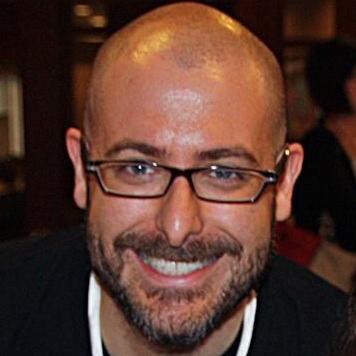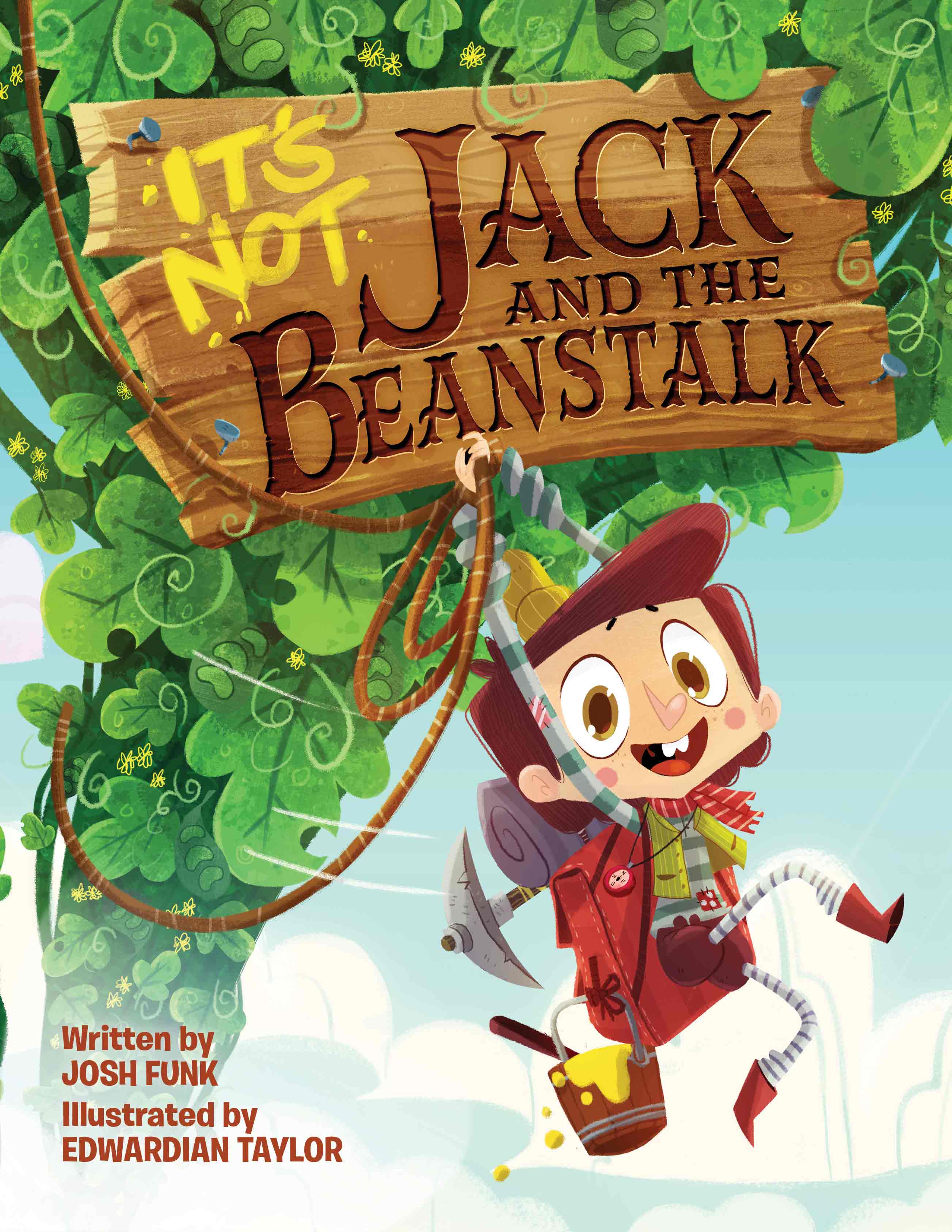 Josh Funk is the author of It’s Not Jack and the Beanstalk, illustrated by Edwardian Taylor. The following is a complete transcript of Josh’s interview with Cracking the Cover.
Josh Funk is the author of It’s Not Jack and the Beanstalk, illustrated by Edwardian Taylor. The following is a complete transcript of Josh’s interview with Cracking the Cover.
Why do you write? Why specifically for children?
I was never a huge reader growing up. But I wish I had been. There are so many amazing books out there. And when I had kids, reading became a huge part of our lives. I spent hours every night reading picture books, then chapter books, then novels to my kids as they grew.
There were some amazing books that I loved! Books about gardens and architects and vampires—really cool topics, with some of the most amazing art I’ve seen anywhere. I decided that I wanted to try to write my own stories.
Like many aspiring writers I decided to start with picture books. I (mistakenly) thought that writing a picture book would be easier than writing a novel or something longer. It took years to learn the craft of writing picture books and I wrote some terrible stories along the way. I’ve still got lots to learn, but I think I’m slowly figuring things out.
Where do your ideas come from? Specifically for It’s not Jack and the Beanstalk?
Normally I try to think of what I haven’t seen before. For lots of my books, I think about what I want to see illustrated. I thought it would be funny to see a story about a pancake and French toast racing through a fridge for the last drop of syrup causing culinary chaos along the way, so I wrote Lady Pancake & Sir French Toast. I wanted to see a pirate-dinosaur. So I wrote, Pirasaurs!
In the case of It’s Not Jack and the Beanstalk, we’ve all obviously seen and read the story of Jack and the Beanstalk. This time, I wanted to write a story where the characters didn’t do what they were supposed to do. Again, you might say that we’ve all seen fractured fairy tales before. But this isn’t your average fractured fairy tale. This is META-Fractured Fairy Tale—where the characters not only don’t do what they’re supposed to do—but they argue back at the reader.
What is the hardest part of writing a picture book?
The boring answer is waiting. Waiting to see if a publisher will buy your book. Waiting to see the artist’s interpretation. Waiting to hold the book in your hands. Waiting to share the book with readers.
Outside of waiting, I find revising the hardest. When I get excited about a story, I tend to burst out and write a whole first draft right away. Then, I need to step back and let it sit, get feedback from others, and revise. Revising is such an important part of the process—and often takes a long time and many tries. But when it all comes together, all the revisions are worth it.
 How long did it take to write It’s not Jack and the Beanstalk?
How long did it take to write It’s not Jack and the Beanstalk?
I started writing It’s Not Jack and the Beanstalk in the fall of 2014. I performed it with my kids at family gatherings and for friends and made revisions over the next few months. My daughter (the elder of the two) played the role of Jack. My son played the role of the giant. I read the part of the frustrated narrator. It was a lot of fun to perform. And I hope students get the chance in a Reader’s Theater type environment.
After a few months of revising, I shared it with my agent and we found the perfect editor and publisher at Two Lions. That was a little over two years ago.
Why do you think It’s not Jack and the Beanstalk will appeal to readers?
I certainly hope it frustrates the adult readers who read it to a child audience. And I think that kids will enjoy seeing their teachers/parents/librarians/caregivers look foolish when Jack and company refuse to follow the traditional story. I think kids will get a kick out of seeing adults act this one out.
How does the finished version of It’s not Jack and the Beanstalk compare to how you first envisioned it?
I don’t think particularly visually, at least regarding specifics when writing stories. Picture book artists are so incredibly talented, there’s really no point in thinking about how it might turn out until you actually see an artist’s sketches.
And Edwardian Taylor’s illustrations are better than I ever could have hoped. The characters he designed and the emotion he captures in their facial expressions is spot on! Plus, if you look closely, Edwardian added loads of other fairy tale, fable, and nursery rhyme characters throughout the book for readers to search for on multiple reads.
How has your writing evolved?
Like I tell students at school visits, writing is just like playing a sport or an instrument: the more you practice, the better you get. As I said, I wrote the first draft of It’s Not Jack and the Beanstalk in 2014. I’m a much better writer now than I was then. I’ve read more. I’ve written more. I’ve made more mistakes—and learned from them. My first drafts are better now than they were 3 or 6 years ago. So I often need fewer revisions to get my stories to a good place. I’m also a better judge of which ideas are worth pursuing further—and which I should put aside.
Additionally, this is my first book that is not written in rhyme—which is a big step for me.
When you were studying computer science, did you ever think you’d end up writing books in your free time?
Absolutely not. As I said, I wasn’t even a big reader growing up. Let this be a lesson to all you children who are also not huge readers: Beware. You might be an author someday.
How has your work in the tech industry influenced your writing?
I don’t think the tech world has influenced my writing much. But I think that some of the skills I use in the tech world (problem solving, thinking of things like puzzles) translates well to writing a story. A story needs to have certain elements to be successful and entertaining: interesting characters, a compelling plot, an emotional journey, a satisfying resolution—and I often think of writing as solving a puzzle.
Outside of that, I do have a picture book coming out in the spring of 2018 called How to Code a Sandcastle (Viking/Penguin) in partnership with Girls Who Code—which will be an interesting meld of my two worlds!
What are you working on now?
In addition to How to Code a Sandcastle, I’ve got a handful of books coming out in the next year or two. Albie Newton (Sterling, spring 2018) is about a boy-genius’s first day of school—and his potentially misguided attempt at making friends.
Lost in the Library: A Story of Patience and Fortitude (Macmillan, fall 2018) is the first picture book about Patience and Fortitude, the two lion statues that faithfully guard the New York Public Library. When Patience goes missing, Fortitude realizes the secret to Patience’s disappearance may be within the library itself.
And possibly even another It’s Not … fairy tale featuring the same frustrated storyteller … but now I’ve said too much…
Is there a book from your own childhood that still resonates with you today?
It’s funny, there are so many picture books I remember from my childhood. But to this day, I’d still like to spend the night in a department store and jump all over the beds like Corduroy. I mean, who wouldn’t?
